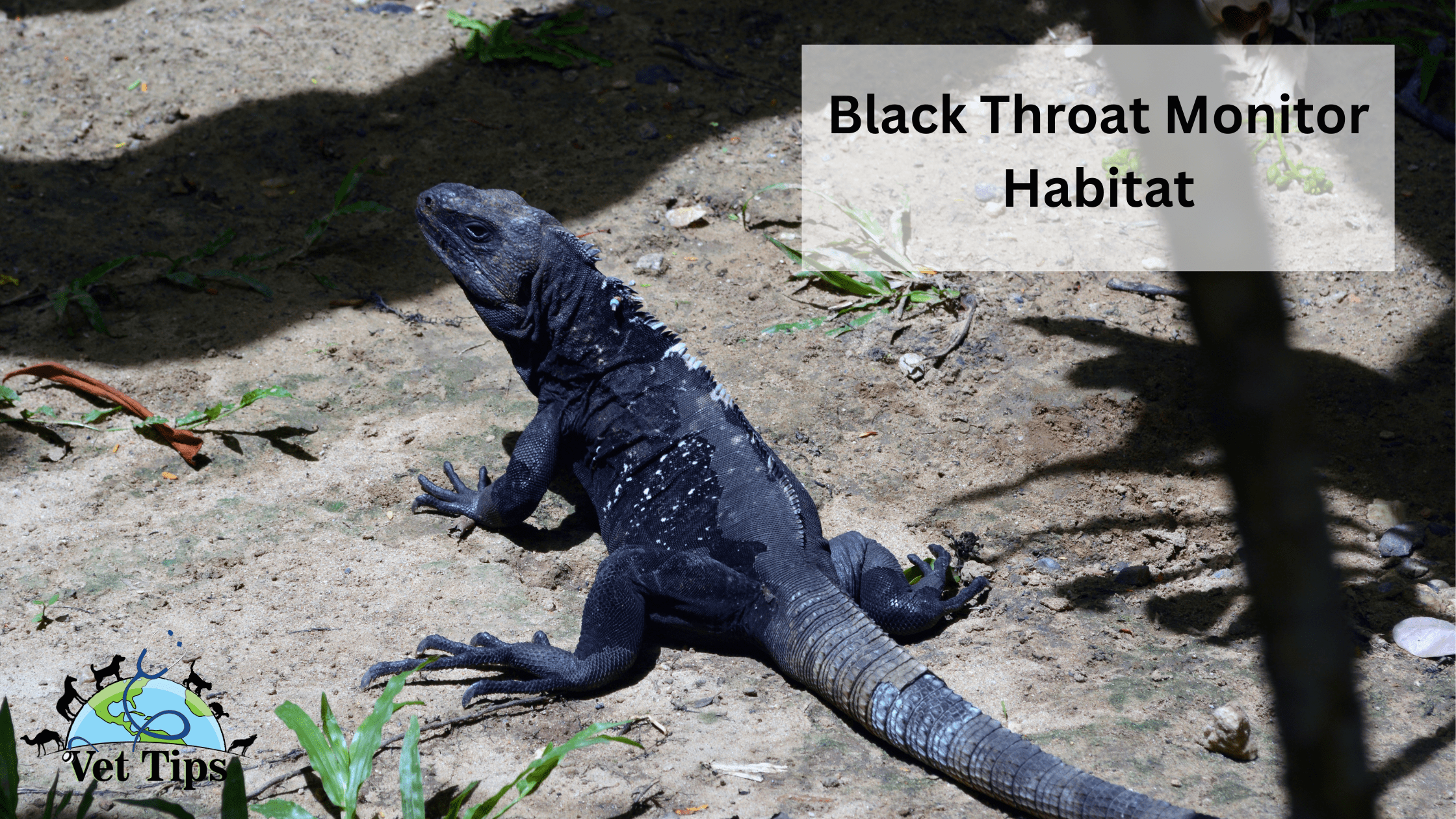Black Throat Monitors, also known as Black Throat Monitors (Varanus albigularis), are fascinating reptiles that are native to the dry parts of sub-Saharan Africa. As fans of reptiles, it is essential for us to have a thorough understanding of the particular habitat needs of these wondrous species in order to guarantee that they enjoy the highest possible standard of living and well-being. In this post, we will look into the most important aspects of a Black Throat Monitor habitat and provide guidance on how to construct an environment that closely replicates their natural home.
In the wild:
Black Throat Monitors are naturally found in Arid, semi-deserts, savannah, bushy, and forested areas. These big Monitors are native to Zimbabwe, Namibia, South Africa, to Northern Ethiopia. But due to awareness, people start petting them, and the domesticated Black Throat Monitor can be found all around the globe.
In Captivity:
For our domesticated Black Throat Monitors, we must provide a nearly similar habitat to their natural habitat. For this purpose, these monitor lizards require a large and robust enclosure or terrarium with all the needed items.
Most owners build a permanent enclosure for their Black Throat Monitor out of wood or plexiglass. The cage should be large enough for your Monitor to take a few steps forward, rotate, and stretch usually.
You must provide these bulky Monitors with a variety of places for climbing and basking. It is essential for their health and welfare. Climbing shelves at different heights and strong branches provide space for your pet Monitor to explore and bask near the ceiling heat lamps. Add additional ramps and secondary ways to help your Monitor climb up and down.
A simple plastic Kiddy pool or utility tub that includes ramps for easy access and exit will add to your lizard’s compliments even though monitors aren’t strong swimmers. Install a tub with a drain for easy cleaning as water usually needs to be changed daily. You will also need a safe heater for the water to keep the temperature around 80-85 F.
Even large monitors need a place where they can feel safe and secure, so a hidden area should be provided. Use plywood and make an upside-down wooden box to serve as hiding the area. Make sure all the furnishings in the cage have bolts securely in place.
Some owners use a whole room (with all the basic needs) as their enclosure. This is also an excellent way to provide a good habitat to Black Throat Monitors.
Housing
Please provide excellent housing to your pet Black Throat Monitor to attain his natural habitat requirements.
Substrate
Monitors are also very efficient diggers, so they need to get a soil floor (substrate). Add a fair layer of substrate material to the enclosure. Clean dirt mixed with sand is enough. Tile flooring or Vinyl can also be used under the substrate, as it is easy to clean. But digging with claws can damage this layer of material.
Heat
Because these lizards are from Africa, they like warm temperatures. Tanzania possesses a tropical climate where it stays above 68 F throughout the year (except for high altitudes). Provide your Black Monitor lizard with a basking area that reaches 90-92 degrees in the upper part of the day and stays above 75-78 F at night.
Light
Black Throat Monitor lizards need a source of UVB lighting for at least 12 hours a day to stay healthy. Sunlight is the best source of Ultraviolet light (UVB), but it is not always available. Sunlight passing through windows is also not a UVB source because glass filters out those hidden rays.
Like other monitor lizards, Black Throat Lizards need UVB rays daily. Special UVB emitting bulbs and reptile heat lamps can also be used to provide your pet Monitor with the right temperature and a day/night cycle, including exposure to the sun’s rays. Artificial UVB lighting is unnecessary if you have decided to keep the black throat Monitor outside to get natural sunlight all year.
Humidity
Monitors like the humidity of 68-85%, which is achieved with fogging and misting their enclosure and substrate.
Plants and Decorations
Due to their eagerness for digging, any decorations or wooden plants you plan to add must be heavy enough that your Monitor cannot move them, or you have to fix them at one place in some way. Climbable ledges or a sturdy wooden post are good options to include as monitors are very agile and fast climbers.
Cleaning
You will need the regular raking of the substrate to remove the waste and sheddings. The water must be replaced daily, to keep Monitors healthy.
Food and water
Similarly, Food and water are also included in the habitat, so we must provide them with a portion of good Food near their natural diet.
Young chickens and rats, and other rodents, are usually good options for Black Throat Monitor meals. Crustaceans, snakes, fish, lizards, eggs, and even freshwater shellfish are suitable options and acceptable diet variations for these giant monsters.
The wild-caught Black Throat Monitor may only want to eat live prey, while captive-bred monitors are willing to eat already killed prey. Most Black Throat Monitor owners buy previously-killed, frozen mice, or frozen-rat in bulk online and thaw them as required. There is some debate about whether these Monitors
Insects, such as mealworms, crickets, and cockroaches, can be fed to these monitors in addition to their regular meals of birds and rodents. If you feed insects, dust them with a calcium powder first, and make sure the insect has been gut-loaded with bee pollen or any other supplement.
If their housing and habitat are not good enough, they may get sick due to diseases or medical issues.
General health and behavioral problems of Black Throat Monitors
If your Monitor feels sluggish or otherwise sick, do not try to treat these symptoms yourself. Get treatment from an exotic animal vet who specializes in Monitors
Like other monitors and many other pet lizards, Black Throat Monitors suffer from metabolic bone disease (MBD), resulting from a calcium-phosphorus imbalance that usually occurs when Monitors are not getting enough UVB lighting to make vitamin D, which helps in calcium absorption
Constipation is a significant health concern for any Black Monitor. It usually occurs due to Impaction. Like other large lizards, black-throated monitors are voracious animals and often eat things they cannot easily digest, such as substrate or sand from their cages. It usually occurs when they are stressed out
Although they are also known to be infected with parasitic diseases, they are less affected than other small lizard species. But always prefer your veterinarian’s advice when your Black Throat Monitor gets sick.
Tell us in the comments how you like our article, “Black Throat Monitor Habitat”
For similar posts, click here.
For source file, click here.





One thought on “Black Throat Monitor Habitat”